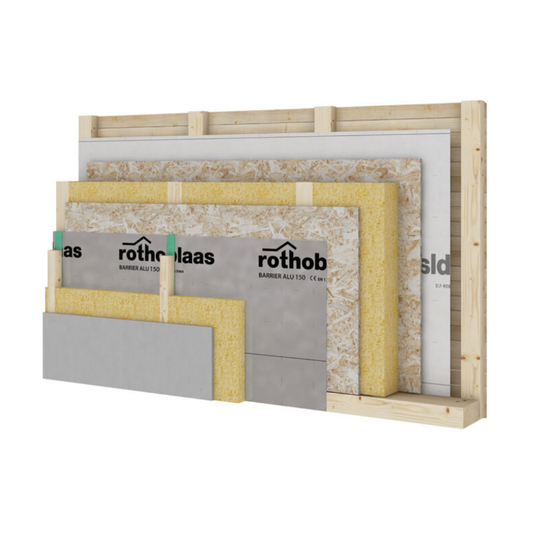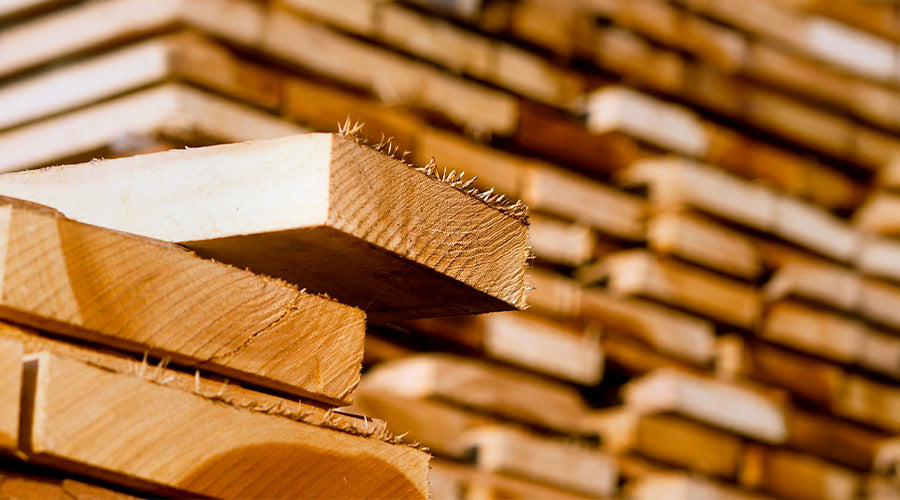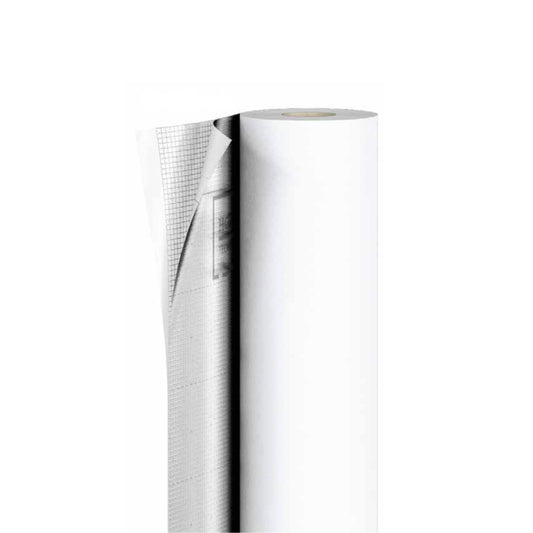
Roof Barriers
High-performance vapour and moisture roof barriers
Roof barriers play a crucial role in modern roofing systems, helping to control moisture movement, improve energy efficiency, and extend the lifespan of a roof. Whether you're working with a flat roof vapour barrier, a moisture barrier for a pitched roof, or a vapour barrier for a warm roof, choosing the right product is essential for preventing condensation buildup and protecting insulation.
Inadequate moisture control in roofing systems can lead to damp, mould growth, and structural decay, particularly in timber buildings. A well-installed roof vapour barrier ensures that excess moisture is managed effectively, preventing water ingress and improving insulation performance. Browse our roof barrier solutions now.
-
 Sold out
Sold outBarrier ALU 150
Regular price £206.64 GBPRegular priceUnit price / per -
Stop House ALU Net 100
Regular price £78.60 GBPRegular priceUnit price / per
How do roof barriers work?
A roof barrier is a protective layer that regulates moisture movement and prevents condensation-related damage within a roofing system. These barriers are primarily used to:
- Stop water vapour from entering the insulation layer, reducing the risk of condensation buildup.
- Act as a moisture barrier, preventing external rain and humidity from penetrating the structure.
- Enhance thermal performance by limiting air leaks and reducing heat loss through the roof.
Types of roof barriers
- Vapour barriers – prevent moisture-laden air from passing through to cooler roof surfaces where it could condense into water droplets.
- Moisture barriers – protect against external water ingress, particularly in flat and low-pitched roof systems.
The correct type of roof barrier depends on the climate, roof design, and insulation requirements of the building.
What are the benefits of roof barriers?
- Prevents condensation damage - A roof vapour barrier stops warm, moisture-rich air from reaching cold surfaces, preventing condensation-related issues such as damp, mould, and timber decay.
- Protects roof insulation - Wet insulation loses its thermal efficiency. A vapour barrier for warm roofs ensures insulation remains dry and fully functional.
- Enhances energy efficiency - By controlling air leakage and moisture movement, roof barriers help maintain stable indoor temperatures, reducing heating and cooling costs.
- Increases roof longevity - A flat roof vapour barrier or pitched roof moisture barrier helps to protect the structural integrity of the roof, reducing maintenance and repair needs over time.
- Ensures compliance with building regulations - Many modern building codes and insulation standards require the use of vapour control layers in roofing systems to meet energy efficiency and moisture management requirements.
What to consider when choosing a roof barrier?
Selecting the right roof barrier depends on several key factors:
Roof type (flat vs. pitched)
- Flat roof vapour barriers – essential for preventing moisture penetration and insulation saturation in roofs where water runoff is slower.
- Pitched roof barriers – may require breathable or vapour-permeable membranes to allow controlled moisture escape.
Warm roof vs. cold roof design
- Vapour barriers for warm roofs – placed on the warm side of insulation to prevent condensation buildup.
- Cold roof vapour barriers – require careful ventilation and airflow management to avoid trapped moisture.
Compatibility with insulation and roofing materials
- Ensure the roof barrier works with the chosen insulation, roofing membrane, and overall roof structure to maintain performance.
Permeability and moisture resistance
- Vapour-tight barriers are necessary for high-humidity environments.
- Breathable barriers allow controlled moisture movement in ventilated roofing systems.
Installation method and sealing
- Proper sealing is critical to ensure the vapour barrier functions correctly. Look for barriers that are easy to install and seal effectively.
Do I need a vapour barrier on warm and cold roofs?
The need for a vapour barrier depends on whether the roof is designed as a warm roof or a cold roof:
- Warm roofs – a vapour barrier is essential to stop warm, moisture-laden air from reaching the insulation and condensing.
- Cold roofs – these typically require ventilation rather than a full vapour barrier, to allow moisture to escape naturally.
If a vapour barrier is used in a cold roof without adequate ventilation, moisture can become trapped, leading to condensation, damp, and potential structural issues.
How to install a vapour barrier on a roof?
Step-by-step guide to installing a vapour barrier
1. Preparing the roof surface
- Ensure the roof deck is dry, clean, and free from dust or debris.
- Check for any existing moisture issues before installation.
2. Rolling out the vapour barrier
- Start at the lowest section of the roof and work upwards.
- Lay the vapour barrier sheets horizontally, ensuring overlaps of at least 100mm between sections.
3. Fixing and sealing the membrane
- Secure the vapour barrier using approved fixings or adhesive.
- Use vapour barrier tape to seal all overlaps, ensuring a continuous moisture-tight layer.
- Ensure penetrations such as vents and chimneys are properly sealed using specialist flashing tape or collars.
4. Installing insulation and roofing materials
- Place insulation boards or rolls on top of the vapour barrier (for warm roofs).
- Complete the roof with roofing membranes, tiles, or metal sheets as per design specifications.
Proper installation of a roof vapour barrier ensures long-term moisture control and thermal efficiency.
Which is the best roof barrier?
The best roof barrier depends on the roof type, insulation setup, and environmental conditions:
- Best for flat roofs – flat roof vapour barriers made from bituminous or synthetic materials provide superior waterproofing and durability.
- Best for warm roofs – high-performance vapour control layers with low permeability prevent moisture buildup in insulation.
- Best for cold roofs – breathable moisture barriers allow controlled airflow, reducing condensation risks.
- Best for high-humidity areas – vapour-tight membranes help manage moisture movement, especially in bathrooms, kitchens, and humid climates.
Choosing the right roof barrier ensures long-term protection, energy efficiency, and structural stability.
A roof barrier is a crucial component in timber construction, offering moisture protection, insulation support, and energy efficiency. Whether you need a flat roof vapour barrier, a roof vapour barrier for a warm roof, or a moisture barrier for a pitched roof, selecting the right solution ensures long-term durability and optimal roof performance.
By understanding how roof barriers work, their benefits, and correct installation methods, you can protect your timber structure against damp, condensation, and heat loss—ensuring a stable, efficient, and long-lasting roofing system.
Timber build advice:
-

How to soundproof a timber house?
Find out how -

How to connect timber to…..?
Find out how -

How to fix timber build noise issues?
Find out how
Need advice on your timber project?
Our team of experts are ready to assist you with any questions or guidance you may need for your timber construction. Whenever you're ready to delve deeper into the possibilities, feel free to reach out to us.





